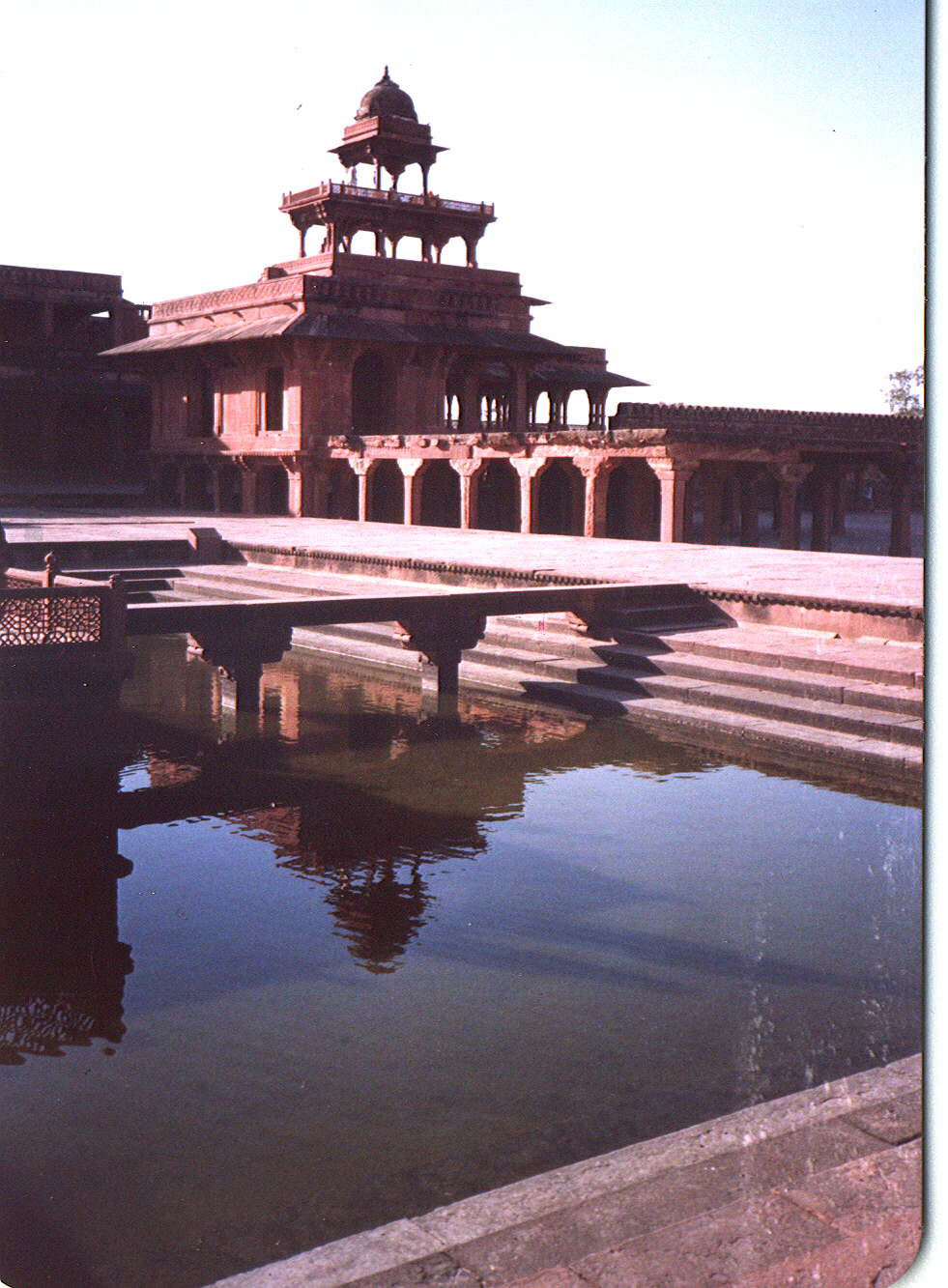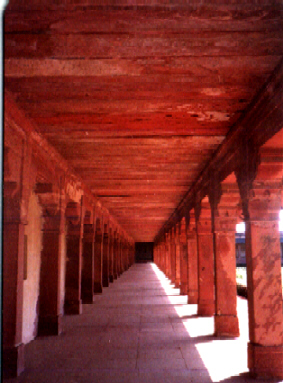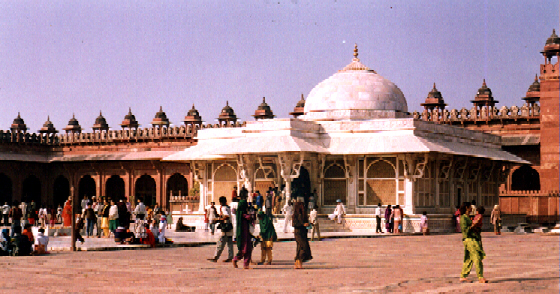

Percival BROWN, Indian Architecture (Islamic
Period), DB
Taraporevala Sons & Co. Pvt. Ltd, Bombay, 4th
Edition, 1956.
Imagine, therefore, a city containing no streets, or ordinary habitations,
but an
arrangement of broad terraces and stately courtyard around which
are grouped numerous palaces and pavilions, each one rivalling the
other in the elegance and richness of its architectural treatment.
People this with a moving throng of nobles, high officials, personages
of rank, and the gaily caparisoned attendants of such an aristocratic
community; the emperor himself in residence surrounded by the panoply
of his exalted state, and some idea may be gained of Fatehpur Sikri
during its transient but enchanting hour towards the end of the sixteenth
century. Then with one movement sweep away every vestige of this
colourful human element, leaving only the vacant setting, a vast
sepulchre of a city devoid of life or spirit. Such is Akbar's
capital at the present day, recalling the words,"How doth this City
sit solitary that was full of people". Yet in the still watches
of the night, after its custodians have departed to their homes in the
neighbouring villages, faint echoes of its ancient pageantry seem to
return. For every murmur from the scrub and jungle by which
it is encompassed, every sound from the distant hamlets, is caught
up within the deserted courts and corridors, each of these becoming
a whispering gallery seeming to repeat in mysterious accents its
brief but brilliant story.

Translated into French by
Mallika Trivedi, 1996.
Traduit en français par Mallika
Trivedi, 1996.
Imaginez une cité sans rues et habitations
ordinaires. Rangez-y de vastes terraces et une cour majestueuse,
entourées de nombreux palais et pavillons, dont chacun rivalise,
l'un avec l'autre, de la beauté et de la somptuosité de son
traitement architectural. Peuplez-la avec une multitude de nobles,
hauts fonctionnaires, hommes de rang, et les couleurs vives d'une
telle aristocratie; l'empereur lui-même au centre de la panoplie
de son état grandiose. Vous ne vous évertuez
ainsi à concevoir qu'une image très simple de Fatehpur Sikri
au zénith de son règne enchanteur, quoique éphémère,
vers la fin du XVIe siècle. Puis, d'un seul geste,
effacez tout vestige de cet élément humain, laissant
derrière lui tout simplement le cadre vacant, un vaste sépulcre
d'une cité dépourvue de toute sa vie et de
son âme. Ainsi reste aujourd'hui la capitale d'Akbar.
Pourtant, pendant les nuits calmes et silencieuses, suite à la rentrèe
des gardiens à leurs foyers dans les villages d'alentour, des
échos légers de sa pompe ancienne semblent revenir.
Chaque bruit des forêts et des brosses, qui entourent les
remparts, est capté dans les cours abandonnées, et se transforme
en chuchotements qui racontent, avec des accents mystérieux,
la vie glorieuse quoique courte de cette ville fantôme.

Links to Fatehpur Sikri on the Net
http://www.sscnet.ucla.edu/southasia/Culture/Archit/Fateh.html
http://www.visions-net.com/fsikri.htm